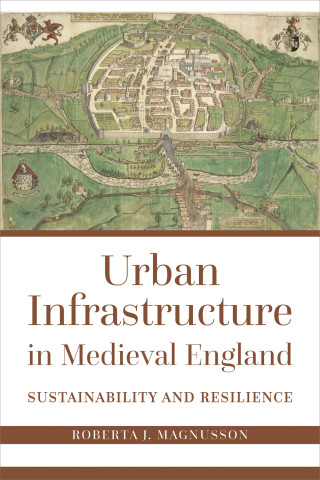
Reviews
This is the kind of book that is all too rare in modern historical scholarship. It is at once meticulously researched, granitically organized, perceptively argued, and eminently readable. The last is no mean achievement when one considers the subject matter. Banks, investments, credit, and debt may be important for our understanding of medieval and Renaissance Italy, but as anyone who has balanced a checkbook or read an annuity report can attest, it can all be dreadfully boring. Not so here.
This volume is an outstanding example of meticulous, readable, wide-ranging scholarship... [It] is careful... brilliant study.
This book is a mine of information and a most reliable guide to the Venetian Money Market. For many years to come it will constitute an essential tool for an serious study related to the history of Venice and its economy.
I cannot emphasize enough the originality of this research for Italian studies in general as well as its painstaking and virtuoso qualities. The book will stand as the unavoidable model for the scholars who eventually do the history of banking and the public debt in other major commercial capitals.
Book Details
List of Illustrations
List of Tables
Preface
List of Abbreviations
Part I. Local Banks and Bankers: The Institutional Side
Chapter 1. From Moneychanging to Deposit Banking
Chapter 2. The Supervision
List of Illustrations
List of Tables
Preface
List of Abbreviations
Part I. Local Banks and Bankers: The Institutional Side
Chapter 1. From Moneychanging to Deposit Banking
Chapter 2. The Supervision and Regulation of Banking
Chapter 3. The Organization and Operation of Banking Enterprises
Part II. The Vagaries of Deposit Banking: A History Seen Through Panics, Bankruptcies, and Liquidations
Chapter 4. Bank Failures in the Trecento
Chapter 5. Bank Failures in the Quattrocento
Chapter 6. The Making of the Panic of 1499-1500
Part III. The Money Market and Foreign Exchange
Chapter 7. Florentine Merchant Bankers and Their Community
Chapter 8. Exchange and the Money Market
Part IV. Public Debt and Private Wealth: The Floating Debt
Chapter 9. The Grain Office: A "Swiss Bank" for the Nest Eggs ofTerraferma Lords, a Quasi-Public Bank for Venetians
Chapter 10. Bank Loans to the State in the Fifteenth Century
Part V. Public Debt and Private Wealth: Forced Loans and Marketable Credits
Chapter 11. Venice's Monte Vecchio: An Overview
Chapter 12. Criteria Employed in Assessing Patrimonies
Chapter 13. Family and Finance: Forced Loans and the Open Market at Work
Conclusion
Appendixes
Bibliography
Index





